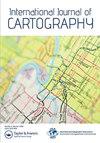My First Atlas
IF 0.9
Q4 COMPUTER SCIENCE, INFORMATION SYSTEMS
引用次数: 0
Abstract
Initially, when I was invited to write this essay, I thought about discussing the maps produced by XVI Century European navigators, which showed ‘Terra Brasilis,’ as Brazil was called during the period of Portuguese colonization, to the world for the first time. But, as I reflected on the importance of this text and the special edition of the International Journal of Cartography, I decided it would be much more appropriate to comment on map production in Brazil, something very much in line with my own academic experience. I have been a professor of School Cartography, among other university courses, for a little over 10 years, and before that, I was a Geography teacher at the primary and middle school levels for 19 years. During the period that I worked in basic education, I undertook my Master’s and Doctorate degree programs, which were always linked to the teaching of cartography, especially tactile cartography. When I was a teacher, I always worked with the most varied kinds of school maps and Atlases. This contextualization is important, because the work I have chosen, which is much more than a map, is part of my background as a teacher, both at school and at university, as it addresses the teaching of cartography as an essential element in the development of spatial thinking among children and young people. Accordingly, I chose ‘My First Atlas,’ a publication of the Brazilian Institute of Geography and Statistics (IBGE), as it was a work that captivated me for the care and the meticulous manner in which it presents the elements of the map, the production techniques and the choice of each representation (Figure 1). The IBGE, organizer of the work, is a Brazilian federal government entity. It was founded on 2 January 1938, replacing the National Institute of Statistics. Nowadays, its institutional mission is ‘to portray Brazil by providing the information required to the understanding of its reality and the exercise of citizenship,’ (IBGE, 2021) and today it is the main source of data and information on Brazil, responsible for the national census, economic surveys, geodesic data and the production of the topographical and thematic maps. Published in 2005, ‘My First Atlas’ is now in its fourth edition; it has 148 pages and it is divided into two parts, the first called ‘Constructing and Understanding Maps’, which teaches children the basics of cartography, and the second called simply ‘Maps,’ (Figure 2) which is similar to a traditional school Atlas.我的第一本地图集
最初,当我受邀写这篇文章时,我想讨论十六世纪欧洲航海家绘制的地图,这些地图首次向世界展示了“Terra Brasilis”,巴西在葡萄牙殖民时期被称为“Terra Brasilis”。但是,当我反思这篇文章和《国际制图学杂志》特别版的重要性时,我决定对巴西的地图制作发表评论更为合适,这与我自己的学术经历非常吻合。我在其他大学课程中担任学校地图学教授已有10多年,在此之前,我在小学和中学担任了19年的地理教师。在基础教育工作期间,我的硕士和博士学位课程一直与地图学教学,特别是触觉地图学教学有关。当我还是老师的时候,我总是使用各种各样的学校地图和地图册。这种背景化很重要,因为我选择的作品不仅仅是一张地图,它是我作为教师背景的一部分,无论是在中学还是在大学,因为它将制图教学作为儿童和青少年空间思维发展的重要因素。因此,我选择了《我的第一本地图集》,这是巴西地理与统计研究所(IBGE)出版的一份作品,因为它以精心和细致的方式展示了地图的元素、制作技术和每种表现形式的选择(图1),吸引了我。IBGE是该作品的组织者,是巴西联邦政府实体。它成立于1938年1月2日,取代了国家统计局。如今,它的机构使命是“通过提供了解巴西现实和行使公民身份所需的信息来描绘巴西”(IBGE, 2021年),如今,它是巴西数据和信息的主要来源,负责全国人口普查、经济调查、测地线数据以及地形图和专题地图的制作。2005年出版的《我的第一本地图集》现在已经是第四版了;它有148页,分为两部分,第一部分被称为“构建和理解地图”,教孩子们制图的基础知识,第二部分被简单地称为“地图”,类似于传统的学校地图集。
本文章由计算机程序翻译,如有差异,请以英文原文为准。
求助全文
约1分钟内获得全文
求助全文
来源期刊

International Journal of Cartography
Social Sciences-Geography, Planning and Development
CiteScore
1.40
自引率
0.00%
发文量
13
 求助内容:
求助内容: 应助结果提醒方式:
应助结果提醒方式:


